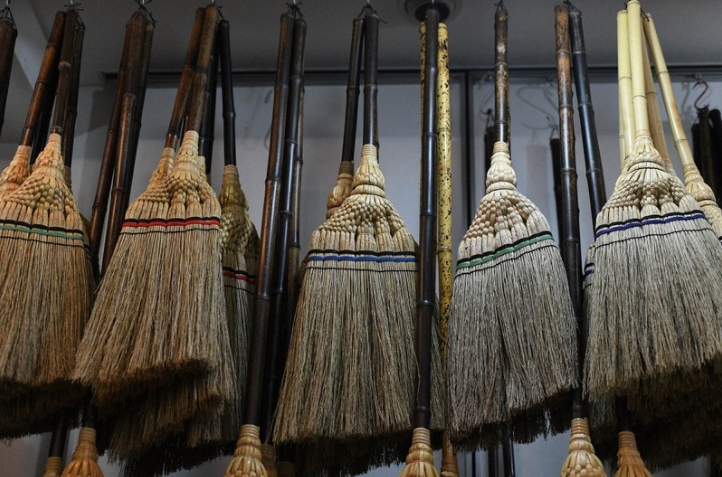
© Shirokiya Denbe in Tokyo’s Chuo Ward via The Mainichi
Pre-reading questions:
I will read each question. Then, please answer them.
講師がそれぞれの質問を読むので答えましょう。
- Do you celebrate Christmas?
- What do you usually do to prepare for the new year?
Vocabulary:
I will read the words, meanings, and sample sentences. Then, repeat after me.
単語、意味、例文を読みます。講師に続いて音読しましょう。
- regular /REG-yuh-ler/
- dustpan /DUHST-pan/
- dye /dahy/
- illness /IL-nis/
- culture /KUHL-cher/
[adjective] – happening or doing something often
Regular use of body lotion will keep the skin soft.
[noun] – a flat container with a handle into which you brush dust and dirt
Please bring the broom and dustpan over here.
[noun] – a liquid substance for changing the color of things
Next, dip your shirt into the dye.
[noun] – a disease of the body or mind
She caught a mysterious illness. She’s now confined in the hospital.
[noun] – the way of life, especially the general customs and beliefs, of a particular group of people at a particular time
Eric is studying the Japanese language and its culture.
Article reading:
Please read the whole article. Then, I will check your pronunciation and intonation.
記事を音読しましょう。講師はあなたの発音とイントネーションを確認します。
As the year ends in less than a month, it’s now ideal for the Japanese to begin osouji—or deep cleaning—in honor of Toshigami, the Shinto God of the New Year.
Traditional brooms were commonly used in Japanese homes. Regular use brought out the natural shine on the mat’s surface, which goes well with soft rush plant tatami matting. And, of course, every broom comes with a dustpan. Harimi are traditional Japanese dustpans made of washi paper stretched over a bamboo strip framework. They’re sealed with kakishibu dye, a persimmon tannin-based water-resistant and bug-repellent colorant. But “sweeping” has a more symbolic significance for the Japanese. Brooms are used as talismans to “brush away” evil spirits, illness, and danger. Many temples and shrines throughout Japan participate in a cleaning ceremony on December 13 to remove physical and mental pollutants that have gathered during the year.
Technology changes and evolves regularly, but tradition doesn’t. It’s rooted in our culture, and no amount of cleaning will be able to “sweep” it away.
Traditional brooms were commonly used in Japanese homes. Regular use brought out the natural shine on the mat’s surface, which goes well with soft rush plant tatami matting. And, of course, every broom comes with a dustpan. Harimi are traditional Japanese dustpans made of washi paper stretched over a bamboo strip framework. They’re sealed with kakishibu dye, a persimmon tannin-based water-resistant and bug-repellent colorant. But “sweeping” has a more symbolic significance for the Japanese. Brooms are used as talismans to “brush away” evil spirits, illness, and danger. Many temples and shrines throughout Japan participate in a cleaning ceremony on December 13 to remove physical and mental pollutants that have gathered during the year.
Technology changes and evolves regularly, but tradition doesn’t. It’s rooted in our culture, and no amount of cleaning will be able to “sweep” it away.
True or False:
Read the sentences and identify if they are true or false based on the article.
文章を読んで、記事に基づいて正誤を答えましょう。
- Osouji is a Japanese tradition in honor of Toshigami.
- Harimi are traditional Japanese dustpans made of bamboo strips.
- Kakushibi dye is a bug repellant.
- Brooms are used as talismans to sweep away evil spirits, illness, and danger.
- Many Japanese shrines and temples participate in a cleaning ceremony on December 23.
Fill in the blanks:
Choose the correct word from the table then fill in the blanks.
適切な言葉を選んで空欄を埋めましょう。
| regular | dustpan | dye | illness | culture |
- Sorry, I left the _______ in the garden. I was cleaning there earlier.
- He’s confined to bed by _______.
- My dream is to travel around the world. I’m interested in different _______.
- She’s a _______ customer of our shop. She visits at least twice a week.
- Can I color my hair with any _______?